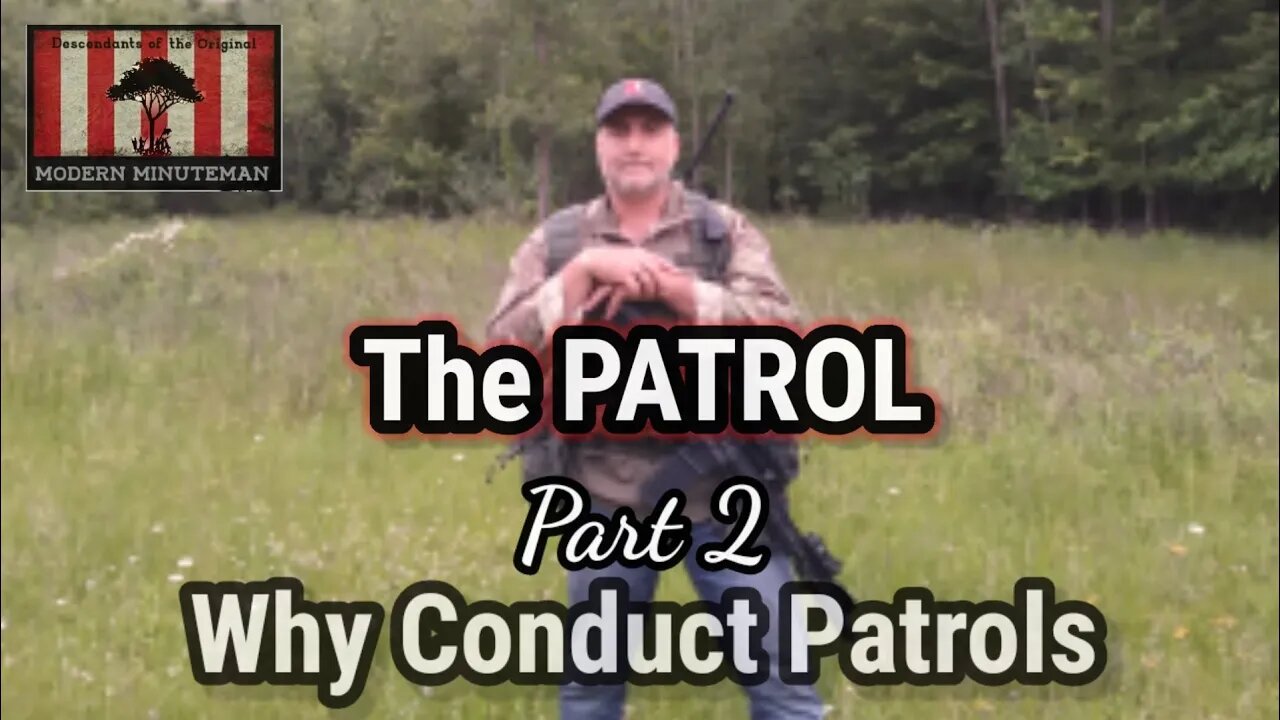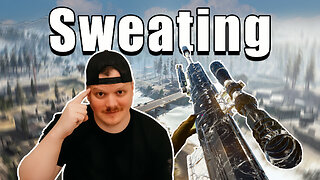Premium Only Content

Why Conduct Patrols... Part 2 of The Patrol series
Patrolling considerations...
There are so many scenarios that could play out and we are all going to have our own situations, circumstances, and plans in place. So what may be some things to consider when conducting patrols?
In any environment, you have to know your goals, obstacles, field of play, possible allies and resources, windows for success, and potential for dynamic cause-and-effect based on the local environment and population.
Ultimately METT-TC should dictate gear and tactics. So what is METT-TC and how can you utilize it in your planing and considerations...
METT-TC: Mission, Enemy, Terrain, Troops available, Time, and Civilian considerations
Mission: Immediate local evacuation? Getting home? Bugging-In? Even a simple emergency could be a planning factor for hunkering down or immediate evacuation. While your primary mission may be to bug-home, you might have a more immediate mission of just evacuating the downtown, ground-zero crisis event. Your mission may have phases or goals to focus and prioritize actions and resources. This is where we should apply our fighting kit. Are you just trying to E&E home? Are you doing some scouting after a couple weeks following a major crisis to assess damage or identify potential resources? Are you doing a security patrol around the perimeter of your property? Are you doing a recce on a nearby disturbance to assess any threats to your and your homestead? Is it a short or long duration patrol?
Enemy; what threatens your survival?: More appropriately, what threat are you facing? Weather, civil unrest, evacuation, loss of communications, etc.? The enemy is anything that can hurt you: landscape, bugs, lack of water, exposure, severe injury, predators (four or two-legged), fire, CBRNE attacks or "spills", active shooter, or any personal limitations; don't just think of some two-legged predator as your primary enemy, there are a lot of threat vectors that can negatively impact you.
Terrain (and Weather): Urban, rural, work-location, vacation location, homestead/property, wooded, open, undulating terrain/mountainous (add in seasonal impacts). Consider travel distance, routes, obstacles, goals (water sources, shelter options), weather impacts, cover and concealment, high-speed avenues of approach, alternate travel routes, choke-points, water crossings, constricted mountain passes, population densities, etc.
Troops Available; understand the "troops": Well, more likely family or friends...are they prepared, self sustaining, any training, what's their physical fitness level or limitations? You want to assess and know everyone's capabilities, personalities, and skillsets. You may have the most advanced and tier-one combat kit, but if you're mission involves bugging home with a few toddlers and a baby in a baby carriage...your planning will change dramatically.
Time (available): I still think the "72-hour" window for most emergencies is a good starting point; either 72-hours for the best chances of rescue, or about 72-hours before a crisis turns into chaos. Still, time could be overall mission-focused, or specifically focused. How much time of daylight (is there a local, state or federal curfew in place)? How much time/distance for the next water source? How much approximate time before that pending storm hits? How much time can you sustain yourself on your own supplies?
Civilian (Public?) Considerations. I think this one is extremely appropriate outside of the military application. You need to understand your local demographics, population densities, geopolitical tendencies, identify and assess areas of potential high crime, level of law-enforcement presence, assess rules of engagement, annotate the public's responses, what intel are you gathering from your radio broadcasts, etc.? You should also assess any emergency directives be they local, state or federal.
-
 3:31
3:31
The Modern Minuteman
2 years ago $0.01 earnedGear Review from The Hooch, the CVLIFE Ligjtweight Rifle Bipod. For the Designated Marksman in you.
6903 -
 8:56
8:56
MetatronGaming
5 hours agoSuper Nintendo NA vs PAL
3.15K7 -
 3:18:30
3:18:30
Nikko Ortiz
5 hours agoArc Raiders 1st Gameplay... | Rumble LIVE
15.4K2 -
 2:17:05
2:17:05
Blabs Life
6 hours agoPART 3: Peter Jackson's King Kong: The Official Game of the Movie | Noob Plays
5.48K1 -
 18:07
18:07
MetatronCore
4 hours agoAmala Ekpunobi is BASED
5.27K4 -
 1:01:48
1:01:48
BonginoReport
5 hours agoWaddle & Gobble Receive Presidential Pardons! - Nightly Scroll w/ Hayley Caronia (Ep.185)
101K31 -
 53:41
53:41
Katie Miller Pod
4 hours agoMike & Kelly Johnson on Marriage, Family, & Demands of the Job | The Katie Miller Podcast Ep. 16
21.8K14 -
 1:31:04
1:31:04
The Daily Signal
5 hours ago $3.94 earned🚨BREAKING: Judicial CHAOS—$7 Million Somalian Fraud Scandal Thrown Out, Trans Terrorist Released
16.8K11 -
 9:07:11
9:07:11
GritsGG
11 hours ago#1 Most Warzone Wins 4049+!
18.1K2 -
 1:05:43
1:05:43
TheCrucible
6 hours agoThe Extravaganza! EP: 65 (11/25/25)
109K14